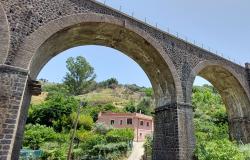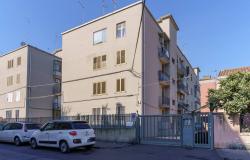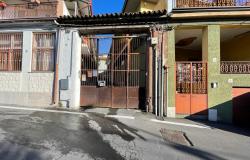Words by Pat Eggleton
A small town in Sicily at midday on Sunday: Mass has just finished, the chattering groups emerging from the little church on the corner are dispersing and some of the young people head for the nearest café for coffee and dalliance; most of the women head homewards, for there is Sunday lunch to prepare. But where are the men going? Some gather in the square to continue their conversation about the political events of the week; some walk slowly up and down with their companions; and others walk quickly, with a purpose.
After a little while, you will see them hurrying back to their cars. And what is in those oblong packages that they are all carrying so carefully? Do they contain a special kind of pizza? No, Sicilians do not eat pizza for Sunday lunch. Go nearer, and you may catch a little of the aroma from these parcels: a hint of delicate baking; a trace of soft sugar; honey, perhaps; vanilla, wafting on the air; and something else, indefinable, tantalising, familiar yet different…. Ah, yes, the scent of almonds.
 For today our discerning shoppers are carrying trays of little cakes and pastries, destined for the Sunday lunch table, after the fruit and homemade desserts that other friends or family members will bring. These pastries, served on their golden cardboard trays, signify that the day is a festa and what is Sunday if it is not a festa?
For today our discerning shoppers are carrying trays of little cakes and pastries, destined for the Sunday lunch table, after the fruit and homemade desserts that other friends or family members will bring. These pastries, served on their golden cardboard trays, signify that the day is a festa and what is Sunday if it is not a festa?
While other townsfolk are relaxing, reading the Sunday papers or attending Mass, the pastry chefs of Sicily are working flat out in the spotless kitchens behind their shops, for Sundays and festivals are their busiest days. In these shops – and there are many of them, dotted all over the town – the creation of these little cakes and pastries has evolved into an art form.
 Have you ever wondered why the Sicilians are so good at making pastries and sweets? The answer lies in their island history and the heritage of their many invaders: The Greeks brought honey, ricotta, hazelnuts, walnuts, grapes, figs and pomegranates; the Arabs brought sugar cane, citrus fruits, date palms, pistacchi, peaches, apricots, cinnamon and cloves; the Spanish brought chocolate and squash from Mexico. In “Sicilian Food”, Mary Taylor Simeti tells us that the Arabs also brought their comfits , or sugar-coated “spices for the chamber” and it was these that developed into the sugar-coated almonds that Sicilians give in various colours to mark various occasions: white for a wedding, blue for a baptism, red for a graduation.
Have you ever wondered why the Sicilians are so good at making pastries and sweets? The answer lies in their island history and the heritage of their many invaders: The Greeks brought honey, ricotta, hazelnuts, walnuts, grapes, figs and pomegranates; the Arabs brought sugar cane, citrus fruits, date palms, pistacchi, peaches, apricots, cinnamon and cloves; the Spanish brought chocolate and squash from Mexico. In “Sicilian Food”, Mary Taylor Simeti tells us that the Arabs also brought their comfits , or sugar-coated “spices for the chamber” and it was these that developed into the sugar-coated almonds that Sicilians give in various colours to mark various occasions: white for a wedding, blue for a baptism, red for a graduation.
 We have Sicily’s convents to thank for the conservation of an art that is still so alive today: pastry-making was a decorous and respectable occupation for secluded women and they could grow many of the ingredients – which, as Simeti points out, are not particularly exotic – in their convent gardens. The biscuits and cakes they made could be purchased through a grille in the convent wall and provided a source of income for the community of sisters. Within living memory, the daughters of desperately poor families were handed over to the nuns to be brought up and one of these children is now the most famous pastry chef in Sicily, Maria Grammatico. With Mary Taylor Simeti, Maria Grammatico has written a book about her life, “Bitter Almonds” and it contains some of her recipes, too. You will find the Pasticceria Grammatico at Erice.
We have Sicily’s convents to thank for the conservation of an art that is still so alive today: pastry-making was a decorous and respectable occupation for secluded women and they could grow many of the ingredients – which, as Simeti points out, are not particularly exotic – in their convent gardens. The biscuits and cakes they made could be purchased through a grille in the convent wall and provided a source of income for the community of sisters. Within living memory, the daughters of desperately poor families were handed over to the nuns to be brought up and one of these children is now the most famous pastry chef in Sicily, Maria Grammatico. With Mary Taylor Simeti, Maria Grammatico has written a book about her life, “Bitter Almonds” and it contains some of her recipes, too. You will find the Pasticceria Grammatico at Erice.
 I’ll leave you, today, with the legend of the Martorana fruit: The first ever batch of almond paste shaped and decorated to look like fruit was made on the orders of the Mother Superior of the Martorana convent in Palermo. The nun wanted to impress her Bishop during his visit, so she told the sisters to hang the “fruit” from the trees in the cloister. So real did it look that the Bishop declared that a miracle had happened, for all the fruits had appeared in the same season.
I’ll leave you, today, with the legend of the Martorana fruit: The first ever batch of almond paste shaped and decorated to look like fruit was made on the orders of the Mother Superior of the Martorana convent in Palermo. The nun wanted to impress her Bishop during his visit, so she told the sisters to hang the “fruit” from the trees in the cloister. So real did it look that the Bishop declared that a miracle had happened, for all the fruits had appeared in the same season.








